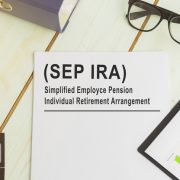Self Directed IRA – Invest in Commercial Real Estate
It’s no secret by now: Real estate – an asset class near and dear to the hearts of thousands of Self Directed IRA owners – has substantially outperformed the S&P 500 index of large-cap U.S. stocks over the past 15 years.
Yes, real estate took a hit in 2007-2009 but not enough to knock below the return on U.S. stocks. Indeed, between 2000 and 2013, the FTSE NAREIT All REITS Index, with dividends reinvested, outperformed the S&P 500, 334 percent to 32 percent. Many Self Directed IRA investors not only held tight to their real estate holdings but also bought more at steep discounts during the 2007-2009 period.
Stocks have rebounded some over the past couple of years, but the track record at this point is clear: If you are looking for reliable and substantial income with potential for capital appreciation, you should consider at least some exposure to real estate. And commercial real estate is offering some terrific opportunities in select markets – especially in the rapidly expanding Southeast, from Texas to North and South Carolina and Georgia.
Owning Commercial Property in a Self Directed IRA
And you can own a direct interest in commercial real estate: Office buildings, strip malls, retail developments, and individual commercial buildings like restaurants, mechanic/auto shops, and anything else you can imagine, within your retirement account.
Because the overall return on investment in commercial real estate relies so heavily on rental income, which is normally taxed at ordinary income rates, direct ownership commercial real estate is particularly well suited to IRAs, Roth IRAs and other tax-advantaged investment vehicles.
Taxation of Commercial Self Directed IRAs
In an IRA, you don’t pay the tax on rental income each year. Instead, all gains not attributable to leverage grow and compound tax deferred until such time as you actually take the money out. This is a small advantage in stocks and most investment grade bonds, with dividend yields in the low single digits. It’s an enormous advantage in commercial real estate, where rental income as a percentage of the amount invested is frequently between 10 and 14 percent, depending on your market and the individual property.
Furthermore, commercial properties offer some advantages over other forms of real estate exposure:
Leases tend to be much longer in commercial rather than residential properties. Where residential properties usually command 1 year leases, a commercial lease can run five to ten years and even longer, when it comes to things like prominent anchor stores in shopping malls.
You also normally don’t have the same obligations to commercial tenants to upkeep the property, or worry about criminal elements like you do with ownership of apartment/multi-family residential properties.
Some tips for investing success:
- Stay diversified. If you already own a home and other assets in your home town, consider buying an interest in a property in another part of the state or the country. That way you get some geographic diversification at little or no cost.
- Do your due diligence.
- Ensure you keep substantial landlord liability and umbrella liability insurance coverage in place at all times.
- Use entities to insulate your commercial property from other assets within your IRA. Otherwise, if someone sues your IRA as the owner of a property, they could claim all the assets in your IRA. By using a separate corporation or LLC for each property, even within the IRA. Otherwise the courts may consider your entire IRA as one entity for the purpose of satisfying the claims of creditors of your IRA.
Are you interested in increasing your possible returns while maximizing diversification and boosting recurring income? American IRA is among the country’s leading experts in helping successful investors across the country do just that, via a Self Directed IRA.
For more information, call us at 828-257-4949, or visit us online at www.americanira.com.





